 “We no longer have time for the good, the beautiful, or whether or not something is true. We have only time for conversation.” — John Cage
“We no longer have time for the good, the beautiful, or whether or not something is true. We have only time for conversation.” — John Cage
It is a commonplace that the overwhelming mass of our contemporary art that is “exhibited” has devolved into mere “exhibitionism.” Vapid, disposable and preening the works are doomed to be buried in the gaping garbage pits of marketing-driven museums, and crapulous galleries that hold most contemporary American and European art. Still, great souls persist among us and great art, though it is often obscured by poseurs and perverts and pallid imitators of all stripes, can still emerge when talent and skill are wedded to inspiration and belief.
 In an arresting and rare explication and meditation on the origins of great art in our time, composer Morten Lauridsen writes of his own work and the work of Francisco de Zurbarán , a long dead master in It’s a Still Life That Runs Deep. The essay reveals a bit, but just a bit, about how inspiration can leap from one medium to another in art and, by such a leap, gain even more power.
In an arresting and rare explication and meditation on the origins of great art in our time, composer Morten Lauridsen writes of his own work and the work of Francisco de Zurbarán , a long dead master in It’s a Still Life That Runs Deep. The essay reveals a bit, but just a bit, about how inspiration can leap from one medium to another in art and, by such a leap, gain even more power.
Lauridsen’s exegesis also reveals how all great art tends to exist outside of time and to defy the “moral, spiritual and aesthetic relativism” that reduces most of our “attempts” at art to rubble. He does so by reminding us that great art, like God, exists outside of time.
In E. M. Forster’s Aspects of the Novel (Surely the only book it is necessary to read to understand the novel.) he presents an image that is as pertinent to all true artists as it is to novelists alone:
“We are to visualize the English novelists not as floating down that stream which bears all its sons away unless they are careful, but as seated together in a room, a circular room, a sort of British museum reading room, all writing their novels simultaneously,”
Lauridsen underscores this notion and expands it to painting and music.
In discussing the origin of his chorale composition, “O Magnum Mysterium,” in the early 1990s, Lauridsen cites as his primary inspiration a painting done in 1633, more than three and a half centuries before The painting is Francisco de Zurbarán’s “Still Life With Lemons, Oranges and a Rose.”
How, we might ask, can a mute still-life from more than three and a half centuries ago spark a contemporary chorale that has been performed and recorded over and over since it’s creation?
Unlike today when most paintings contain only a sop of skill and a slapdash chunk of execution, paintings once spoke more clearly. And those today who still know the ancient language of painting and the old belief can still hear the music in the pigment. Lauridsen describes, or rather interprets, the painting thus:
Francisco de Zurbarán’s “Still Life With Lemons, Oranges and a Rose” normally hangs on a back wall of one of the smaller rooms in the Norton Simon Museum of Art in Pasadena. Like a large black magnet, it draws its viewers from the entry into its space and deep into its mystical world. Completed in 1633, it is the only canvas the early Baroque Spanish master ever signed and dated.
We are shown a table set against a dark background on which are set three collections of objects: in the center, a basket containing oranges and orange blossoms; to the left, a silver saucer with four lemons; and, to the right, another silver saucer holding both a single rose in bloom and a fine china cup filled with water. Each collection is illuminated and placed with great care on the polished surface of the table.
But it is much more than a still life. For Zurbarán (1598-1664) — known primarily for his crisply executed and sharply, even starkly lit paintings of ascetics, angels, saints and the life of Christ — the objects in this work are symbolic offerings to the Virgin Mary. Her love, purity and chastity are signified by the rose and the cup of water. The lemons are an Easter fruit that, along with the oranges with blossoms, indicate renewed life. The table is a symbolic altar. The objects on it are set off in sharp contrast to the dark, blurred backdrop and radiate with clarity and luminosity against the shadows.
The painting projects an aura of mystery, powerful in its unadorned simplicity, its mystical quality creating an atmosphere of deep contemplation. Its effect is immediate, transcendent and overpowering. Before it one tends to speak in hushed tones, if at all.
I’ve seen the original painting by Zurbarán at the Norton Simon, and I can attest to the fact of its strange power to arrest the pace and still the attention into contemplation. The underlying symbolism of the work was unknown to me until Lauridsen made it explicit, but I don’t find it surprising. After many years of ignorant acceptance of one gruesome and ugly step after another downward in art that I witnessed when I wandered through decades of New York’s overheated and overhyped art scene, I came to the reluctant conclusion that most contemporary art was garbage, that it had no soul, and that deep down… it was shallow.
When I thought about why almost all contemporary art were just soft items bobbing in a cess pool a host of reasons presented themselves to me.
Perhaps it was that the ability to draw was no longer taught and expected to be a basic skill of those who would call themselves our “artists.”
Perhaps it was that the proliferation of art schools and “art majors” gave the baby boomers and their offspring a way through college that required as much intellect as a point guard, but not nearly as much talent and dedication.
Perhaps it was that the rise of the ridiculous rich with their 15,000 foot McMansions meant a lot of wall space that had to be covered with something fashionable but not demanding. This just at the time Warhol and Mapplethorpe popped off and could no longer supply those whose bad taste was in their mouth and down their throat. Hence a legion of pretenders and jackanapes arose to fill the arrivistes’ demand for garbage to decorate their squalid lives. This is not a hunger that should be fed for, as all Park Rangers know, “Once a bear is hooked on garbage, there’s no cure.”
In the end, it was, of course all of these and none. It was as simple as Gertrude Stein’s “There’s no there there.” For at the core of all the objects that form the ocean of crap that is palmed off as “art,” there is simply and plainly, nothing at all. Nothing felt, nothing sensed, nothing learned, and nothing believed in. As such this “art” is without soul. And nothing that lacks soul can survive death, especially the death of a culture and our present state which is best described, a la D. H. Lawrence, as “post mortum effects.”
Which is why it is so exhilarating to come across Lauridsen’s citing of the magic and mystery of a painting that inspires music from his soul across more than three and a half centuries. It reminds us that art that is true, that art that comes from belief and the soul, will survive and will continue to expand the soul of man despite all the forces that may array themselves against “the good, the beautiful and whether or not something is true.”
Does Lauridsen’s “O Magnum Mysterium” fulfill this promise? Does it demonstrate that, in the midst of ‘these fragments shored against these ruins’, great art can still arise in our time; that all it takes is belief? I believe that it does and that belief nourishes my soul. You decide for yourself.
I believe that man will not merely endure: he will prevail. He is immortal, not because he alone among creatures has an inexhaustible voice, but because he has a soul, a spirit capable of compassion and sacrifice and endurance. The poet’s, the writer’s, duty is to write about these things. — William Faulkner – The Nobel Prize Banquet Speech, December 10, 1950



![That Was the Whopper Weekend That Was [Illustrated] welcometohell](https://americandigest.org/wp/wp-content/uploads/2021/05/welcometohell-150x150.jpg)

![Allen Ginsberg: The Interview, <strong> ➡ 1972 ⬅ </strong> [Republished by unpopular demand] ginsbergnirvana](https://americandigest.org/wp/wp-content/uploads/2022/05/ginsbergnirvana-150x150.jpg)


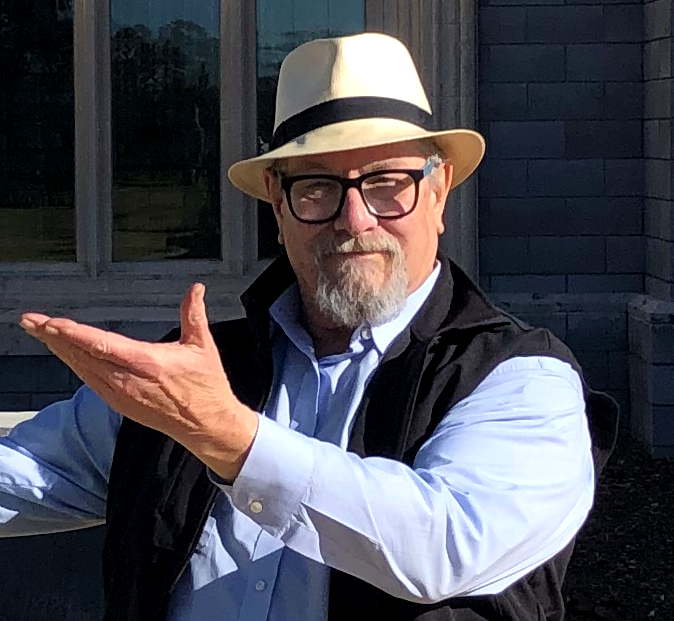 Gerard Van der Leun
Gerard Van der Leun












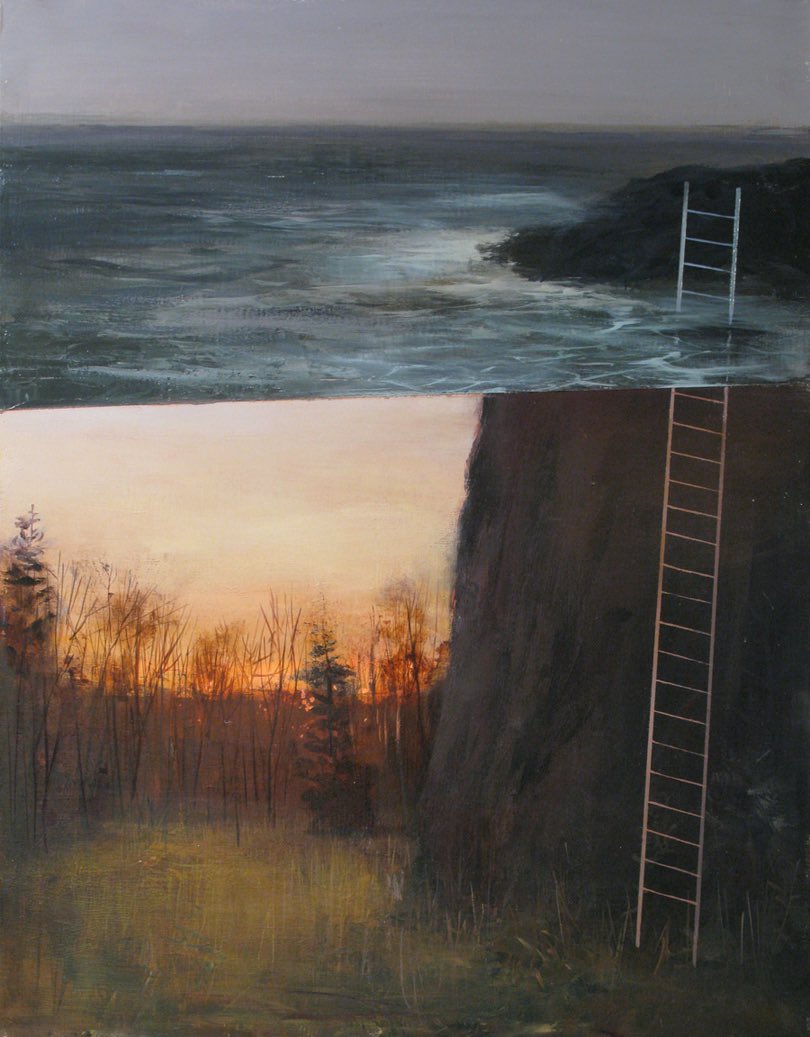


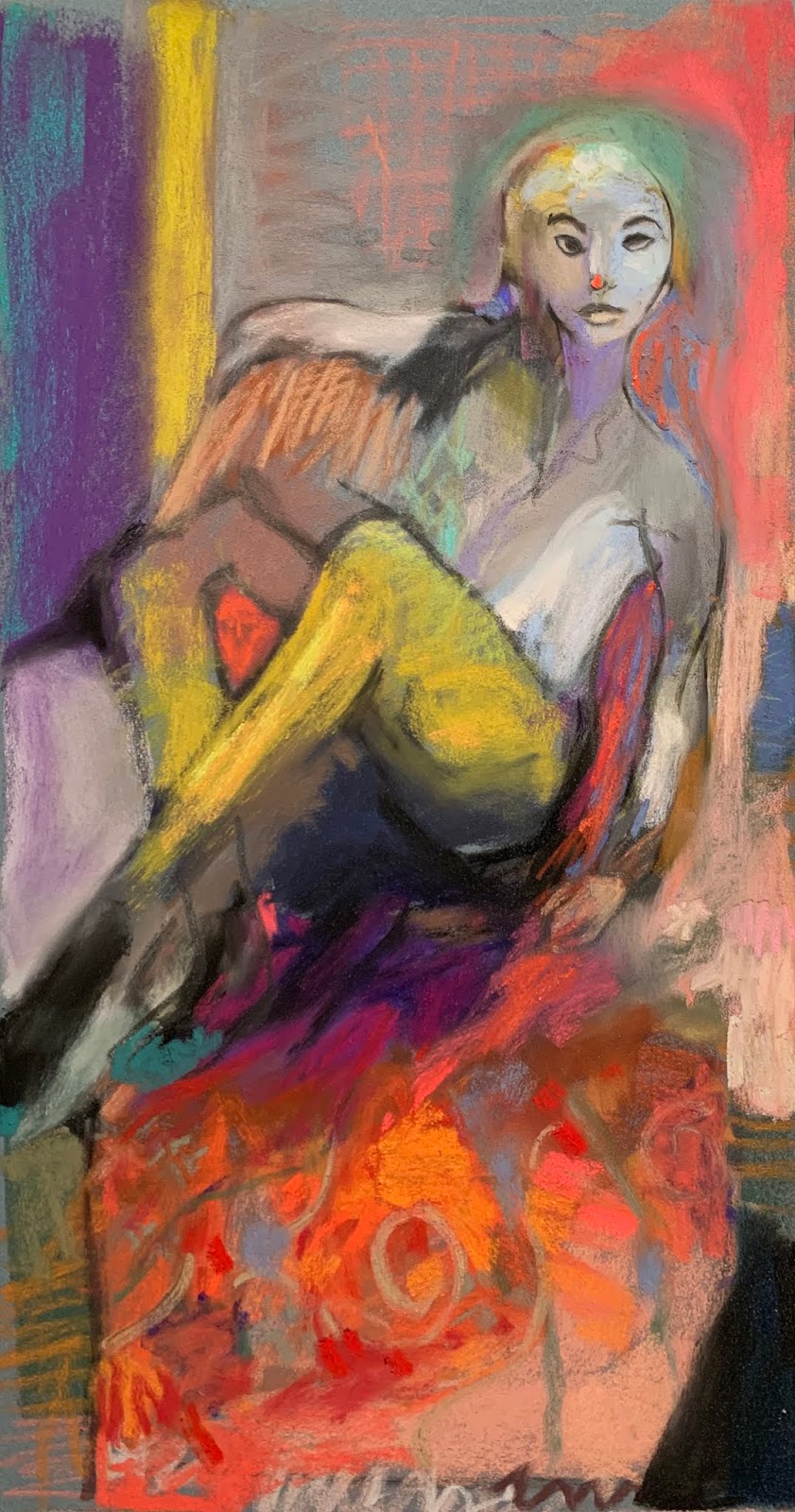
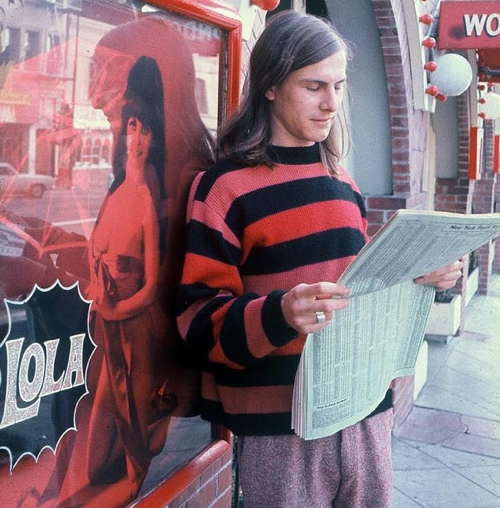
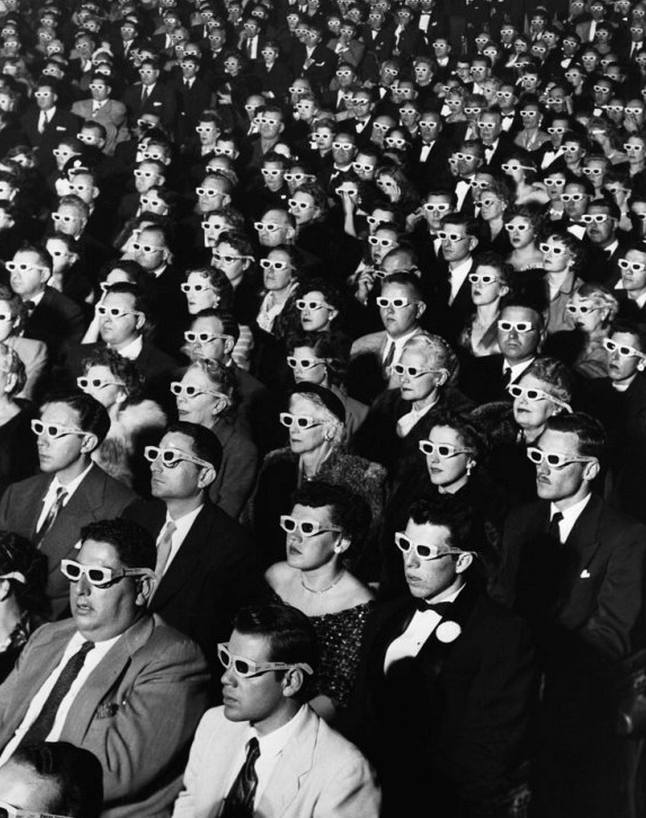
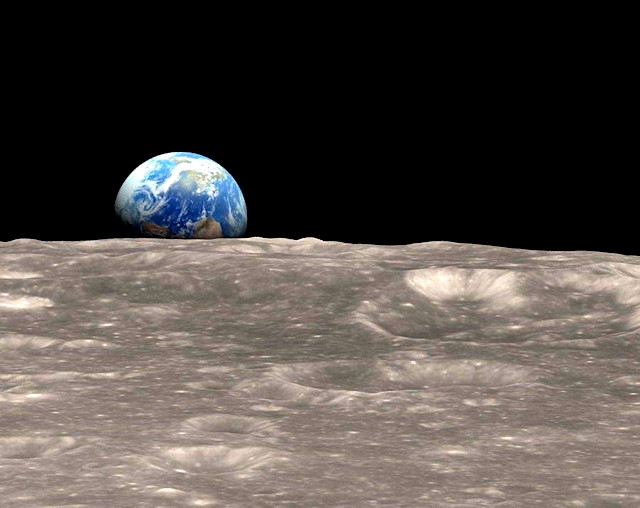





Comments on this entry are closed.
Beautiful. Thank you.
Here in Grand Rapids, Michigan, where the art competition ArtPrize originated, typically 1400 or so artists exhibit and compete for prize money. 95 percent of the pieces exhibited are crap, and belong in the landfill. What I find most ridiculous, though, about this art competition is that each piece exhibited has an explanation, written by the artist, so that people can “understand” what they’re viewing. Art that requires an explanation, is not art.
I certainly enjoy reading about finer sensiblities, he says as he looks at his Rockwell prints and dials up Dylan on the hi-fi.
I loves me some Dylan and Rockwell.
You know it Gerard. Rockwell.
“….when talent and skill are wedded to inspiration and belief.”
===========================================
I live in the “Artists Colony of the Midwest”, Brown County, Indiana and art is everywhere around here. Probably more art galleries per square inch than any other place on the planet. And most of it is an insult to the eye. Seriously. I’m no painter but put the brush in my hand and I’ll do better than most of the stuff out there. But the diff between me and other people that don’t know how to paint (but think they do) is that I have a sense of self worth. I wouldn’t have the gall to put my shitty effort on public display but I can’t say the same for others. Many others. Is this just more rampant narcissism?
The worst of all of it though are the gallery curators and glossy rags that promote this nonsense. They will look you straight in the eye and use $10 words to “explain” why that refrigerator art at best is worthy of praise and huge pricing. They need to be dragged, all of them, until there’s nothing left but a frayed rope.
Gerard, I think you’ll find this pleasing:
https://bayourenaissanceman.blogspot.com/2018/02/impressive-live-sound-effects.html
A boys’ choir in South Africa.
Fascinating choir. Gives one a shred of hope for that beleaguered country and continent.
Goethe said, “In art, the best is good enough.”
It is certainly the office of brilliance, art is. Those who try to define it too closely, as your authors may be doing, are doomed to befuddlement. It is too vast for that. You don’t agree? Okay, let me rephrase. Music is too vast to be defined too closely. Ahh! You agreed with that! If I did actually catch someone there, I beg you to see that your understanding of painting is small.
I love the still life shown, for its formal goodness. Not so much the finish quality, which is trick, but for the imputation of abstract meaning it gives in largeness. Three object groupings. That, alone, is sweetness. Yellow against black. Another abstraction and a very loud one. The painting shouts; far from “still.”
One thing I discovered for myself when I studied theology in the 70s – 80s, was that what the theologians are saying in a given time, will be understood and apprehended by the masses a hundred years later. You like the Impressionist artists, and Vincent van Gogh. Their art was shit! in the day.
A guy named Vetinari once said that people only want to be told what they already know. They don’t want news, they really only crave “olds.” All areas produce shit art, and metric tons of it. Each era only has a few who make new things. The 20th Century had more new art than most, and also the 16th Century. But you crave the fucking 16th Century stuff. No wonder an artist had to display a urinal; he was trying to get us off of the old, and into the ideal part of art. I suppose you listen to instrumental music? This is the musical equivalent to abstract art; no particulars. Yes, abstract art is shit, but not all of it. Only a few are good.
Next year I will be judging abstract art for a prestigious national magazine contest. Will it be all shit?
All areas produce shit art…should read “all eras.”
https://www.theguardian.com/artanddesign/2018/jan/31/manchester-art-gallery-removes-waterhouse-naked-nymphs-painting-prompt-conversation
“He does so by reminding us that great art, like God, exists outside of time.”
I saw Eternity the other night,
Like a great ring of pure and endless light,
All calm, as it was bright;
And round beneath it, Time in hours, days, years,
Driv’n by the spheres
Like a vast shadow mov’d; in which the world
And all her train were hurl’d.
Lines from “The World”, by Henry Vaughan
Imagine a brand new art gallery with freshly painted blank walls, eagerly accepting “art” for arts sake, elevating the demeaning to meaning, and the whole era drops down a little bit more.
http://www.bcdemocrat.com/2018/02/02/arts_briefs-49/
Marvelous essay. You’ve given me a peek inside the world of art and music which, alas, I have little knowledge of from the inside. I do recall one wild surprise of a time about 10 or so years ago when I used to take my young son up to the MFA Boston. In that I am without a clue when it comes to art. And had fond memories of my Dad taking us to the MFA where we mainly dashed to see the mummies. I knew I needed some direction imposed on our visits. So, we would arrange docent led tours organized around a theme. Thus we’d travel through the museum, past so much, indecipherable to me, art pieces, and stop at various works with an educated person giving a small talk at each stop. Wonderful way to experience the museum over time.
On one visit, although the docent was not pleased with the theme, power, as suitable to children, she soldiered on for us. I was so very, very shocked by a piece, in a gallery in front. This was an interesting painting. All blue paint. Sleeping birds, with a beast of prey, a dog or a wolf, coming through and devouring a swath of the sleeping birds. Notably, none of the nearby birds’ slumbers were disturbed. Interesting enough, you say? The thing that shocked me was that this piece was so very clearly a ‘temporary’ piece since it was painted directly onto the wall itself. That was so strange to me. I am not sure why, but it really rattled me that an artist would create in that way.
And Casey Klahn, Discworld, The Truth, is my favorite of Pratchett’s. I adore the audiobook and have listened to it many times. Stop the press.
LOL. Jayne, I used to vette my quoters fairly closely, but you caught me with that one! That’s funny. I still like what “he” says, via Pratchett’s writing. One time, I looked up a quote author, and it turned out his only fame was that he wrote quotes for the internet. Green Meanie eating his own tail.
Ghost: I’m very familiar with the ALBQ area art scene. I once judged a National art show there, and gave the first prize to a big, realistic portrait. Yes to the complaints about the damage that promoting shitty art inflicts; no to your tastes being that important to the whole. Art may be shitty, but so is the contemporary tastes. I’m interested in what’s new.
It bears repeating. Duchamps said, “not everyone is an artist, but everyone is a fucking critic.”
@Casey, ALBQ?
New for new’s sake is wrong headed.
In my field I’m all about “new” and use that for marketing leverage with every project I work on.
If my current work is not newer and better than the last than I am not learning.
However, being new without being old first is a poor foundation for any creative endeavor.
The masters are called masters for a reason.
Having said all of that, I was well into my career before I had ever heard the name Vitruvius (The Ten Books on Architecture). I was appalled that I never learned about this guy in school. Reading that book changed everything for me on various levels. His wisdom spans thousands of years and there is no way to be new, now, without having been old and I realized that after reading that book. Before reading it I was basically in template mode, doing things the way I had been taught without any real reason. The old way, the way of the masters, gave me foundation on which to build my new ideas. I dare say my projects became better in all ways and that of course meant that I became better as a person too and therefore my bottom line increased accordingly. The benefit of proper education is immeasurable, as is the damage from a poor one.
Ghost: I was writing ALBQ because I was too lazy to type out Albuquerque. Your link took us there to New Mexico.
Your statement, your example and your experience are spot on. We sully the past in order to create, as one would tear down old construction to build anew. However, the masters. I agree %500 with you.
I tell my students how, in the NW mountains, the old time climbers used to “shoulder stand” on their partner in order to reach the good holds. Are we, as artists, standing on our predecessor’s shoulders, or his face?
Enjoyable, thoughtful essay. Interesting comments.
& Casey Klahn is a bit of a pompous ass.
A urinal is just a urinal and a pipe is just a pipe (No matter what René Magritte says.). 😉
Having said that, remember it takes one (pompous ass, {I’ll spell it out, me}) to know one (pompous ass) and Sturgeon’s Law; Ninety percent of everything is crap, and paraphrasing his corollary, including this, my, posting.
Realtors and retailers harp on location, location, location & they’re right, place and time are extremely important for appreciation. The time and the place can make all the difference twix that’s nice, to instead, a jaw dropping bug eyed wow!
Some sixty or so years ago I was in an art museum in Chicago, long enough ago I can’t remember the painting title, let alone the museum, and unexpectedly, walking up a set of stairs, found myself, suddenly, quite unexpectedly, looking at an El Greco handing in the landing above me. That was a a jaw dropping big bug eyes wow!
A couple of other a jaw dropping bug eyed wows; Blue Boy at Huntington Gardens. Ruben’s Bacchus at the Hermitage in St. Petersburg (then Leningrad) and a yawn, Warhol’s Marylin, maybe a hundred prints of same, filling a museum wall in Saitama , Japan.
-which segues to the point I started aiming at (& no, not casting aspersions upon Casey, nor the 90% thingy but the location thingy): On another trip to Japan I was in the Ohara art museum in Kurashiki, took a right turn from the bright windowed hall in to a darker room and, as my eyes adjusted, a predominantly blue painting on the far wall eclipsed everything else in the room (Bacchus, in the Hermitage, hit me the same way, by the way.). As I walked closer & could make out the details, it was Jackson Pollock’s ‘Blue’ or ‘Moby Dick’. Previous to that I’d pompously place Pollock right along side the urinal and the pipe but ‘Blue’ at that time, in that place, (& sigh, using another parenthetical aside; ‘Blue’ mostly blue, shapes floating/blending therein, colors bright,objects hinted at, -highlighted in a dim room in Japan, a land of islands surrounded by deep blue sea, Fujisan, the Wave, the floating world…) it worked, it was art, hell, it was really, really great art!.
On a later visit to the Ohara, the room was being remodeled and ‘Blue’ was, temporarily out in the hall, still the same painting, of course, but it’s impact was lost in that location, although it was ‘nice’.
& OK, I’ll cut Magritte some slack on his ‘Treachery of Images’ but Duchamp’s urinal is still just a urinal.
& my last nitpick at Casey & his boy Duchamp; why no everyone’s not a fuckin’ critic but yes, everyone is, each and everyone, everyone’s an artist! -grin-
& no offense meant Casey & I hope none taken.
&& I hope I did fit in 10% of non-crap in this posting.
&&& some of you might enjoy looking at the work of a dead friend of mine that was a contemporary of Pollock, et al: http://skondovitch.com/
Again, essay, comments, quite enjoyable!
I wear that epithet like a badge of honor, Jim. I’ve been to the Hermitage, too, and it changed my life.
In spite of my assitutinousness, you and I seem to be in agreement on most of the things you said.
Duchamp was pulling our leg with his urinal, but I think after he did it, it was done and old stuff. But, I dig that he did it. Without humor, we lose all perspective, and then we die.
Nietzsche: “we have art so we don’t die of the truth.” Glad for these art posts. Good for conservatives to not abdicate culture to the socialists.
Casey I say Ha & Ha, again! I refuse to yield greater assitutinousness, my assitutinousness is most definitely equal to or exceeds your assitutinousness (and, herein another parenthetical aside; I suspect if we say assitutinousness 4 more times, especially if applied to a politician, the word will make it into the urban dictionary!) ! -grin-
& shuck darn, I figured we we mostly in agreement when I wrote the post.
& crediting our esteemed host, Gerard does run a great shop here, interesting, insightful, attracting a really smart, nice, set of folks, myself excluded, of course.
Gerard,
Let me first offer thanks for the continued gift of your words to us, that enrich our remaining minutes. That was a close thing.
Ponder those Vietnamese men and women, likely Catholic, praising the mistery, in Latin… and think of what we lost when Pope John XXIII, Roncalli and the 2nd Vatican Council decided we didn’t need the glue of a Lingua Franca… Many hands have labored blindly, deaf to our pleas, to tear down this ancient and venerable edifice, my friend…
I remember when that happened and the deeply pained and distressed reaction of many of my Catholic friends. Some began their long drift away from the church when that happened.
I have the incredible gift of being surrounded by very talented and thoughtful artists. My life is filled with their focus on beauty. It is a blessing and one that I consider comes from the Almighty.
Many of my days have been spent in galleries. I enjoy the older paintings and I have no patience for most of the contemporary artists of the last 70 years.
One day a long time ago, my beloved and I were in the art gallery out in the Presidio of San Francisco. It was an exhibition of the Impressionists. Lovely, lively, and to me a lovely experience. Then I turned a small corner in the exhibit and there she was–I have loved her dearly ever since.
Enjoy,
https://www.paulklee.net/arab-song.jsp
My apologies, I hit “send” too soon. I wanted to ask for your opinions as to “why”– I am neither a feminist, nor a victim. I love the beauty of work such as Gerard had included here today. The color and movement of the Impressionists give me pleasure. But, it is Paul Klee, and NOT his contemporaries, who speaks to me with humor and his gentle love for humanity. For years, Klee was blacklisted and incorrectly labeled with the title of “anti semite”. Recently, that false claim has been corrected with the facts, but he was perhaps one of the first people I know, who the media destroyed. Perhaps the media was only serving the interests of the gallery owners who owned other artists of that time and type? After watching the media perform during the past four years I am convinced that some gallery owners were involved in that blacklisting for their own personal profit. None of that matters. For the past forty years it is the image of Arab Song that makes my heart smile. Not soup cans. Not toilets, not diners with James Dean sitting at the counter–none of that delights like she does. Go figure! 🙂
Please excuse the multiple posts. I think I need another cuppa! In my excitement at the opportunity to speak openly about “her”, I forgot to say thank you for this most wonderful gift to Gerard for this most beautiful piece you have given us today! It is true joy.
Thank you,
A
When thinking about “Sacred Beauty” and “Art,” I immediately think of the beauty of creation- all throughout the universe, and how we’ve only captured a tiny, but overwhelmingly awesome bit of it on film.
Thanks to the Hubble telescope, we can now get a glimpse into the previously unimaginable glory of what has been around for billions of years.
https://hubblesite.org/images/gallery
Have you ever seen anything more beautiful that that?
Anne’s; “For the past forty years it is the image of Arab Song that makes my heart smile. ”
Yep, as I noted above in 2018, turned a corner, entered a room at Ohara Museum in Japan and Jackson Pollock’s Blue (Moby Dick), yep, still makes my heart smile.
The great thinkers and artist of the 16th through 19th centuries indeed depended on vastly longer horizons of learning. Tocqueville referred to Burke as his tutor even as Burke died six years before the birth of the Frenchman.
And, Casey, the 20th century was a relative desert. Both the democratic mind and universalism are stupifying forces. Goethe said also that all great art is provincial, so only the best of provincial art is good enough.
I appreciate that, James. I argue that the 20th Century is not a throw-away. Not anymore than you would throw away one of your children for a bad haircut.
Thanks for the Goethe information. I like that. That particular quote also gives meat to what I was thinking just now about Lauridsen says that great art exists outside of time, and you have Goethe going into the universal vs the particular; the regional writ universal. Great art will be of its time, because of the unfolding of the era. The greatest is in the vanguard, and no one but the few can even see it. A hundred years later, everyone can see the new thing that has been done. This, from Kandinsky.
Really, the argument of beauty vs newness is quit lost on the conservative tribe, of which I am a card-carrying member myself. But, I started my own art career in the Modernist Era, and newness is therefore in my genetic code. Try to imagine yourself as that visiting Martian, for whom all things on Earth are unrecognizable upon the first glancing look. Is a human baby beautiful? Seriously? Categorically? The baby is new, and to our hearts the epitome of beautiful. But, categorically perhaps a bit misshapen.
Always a fun conversation here and I appreciate the level of learning.
Wow, Anne. That Klee is a knockout.
Wolf Kahn, recently deceased and great German-American artist, said: “If you tell the truth in a painting, people will love it, but they won’t know why.” George Braque said: “The only important thing in painting is the part you cannot describe (in words).” I think it was GB, anyway.
Dear Casey:
I remember the moment well. The great big canvases of the Impressionists–The Garden Party took over the room. But then there was a shot wall about 6′ tall, and when you walked around that wall there she was–hanging at a height below eye level(somewhere between my chest and chin). Maybe it was the height, maybe it was the sharp right turn away from the Impressionists. I will never know. She is painted on a raggedy piece of fabric–burlap I believe. I think James O’Neill had the same experience–the sudden visual of an idea.
Dear Casey: Thank you for printing her here. I hope that someday you get to be in a room with this real work!
Here is James O’Neil’s blue picture (Moby Dick) https://www.jackson-pollock.org/moby-dick.jsp
Don’t like it. Don’t like any of the other stuff at the bottom of the page neither. How in the world is that person considered an artist? No talent and very little effort. Looks something a thief of stolen materials would throw together in a drunken fit.
H/T Gerard. TY for illustrating that comment series by Anne & my response to it.
The reason you do not like it, Ghost, is your eyes are not calibrated. No, it does not require, nor will it receive any, words that describe or sell it. An intelligent and a mature eye is the product of a long life of looking. I don’t speak a bit of Swahili, and yet I understand that it exists.
Why (pronounced Hwaii?) is it only art if you like it?
Casey sed: “Why (pronounced Hwaii?) is it only art if you like it?”
========
You made that up, and it’s a weak defense.
It ain’t about me, it’s about that so called art.
Let’s flip it, why do you consider it to be art, just because someone else said so?
Kinda funny, my eyes have seen thousands of pieces of art work yet my ocular glands are not “calibrated” but the “artist” in question has eyes that were “calibrated” from birth.
From my favorite novel:
“‘Charles,’ said Cordelia, ‘Modern Art is all bosh, isn’t it?’
“‘Great bosh.'”
It’s very fun to see this long discussion, over these years, on Gerard’s post. Let’s talk about this word:
Art. Art is from the root word “ar,” and shares that root with arm and artillery. The basis of arm is to connect – I’m talking about the philology of the word. Now think of how art is the joining of the hand (skill) to the head and the heart. Please consider that skill is not the sum of the whole of art; it is a part. The mind of the artist (the artist’s ideas) and the heart, which is the expression, are the drivers of the skill component. That wonderful artwork, The Scream, is considered the Mona Lisa of the 20th Century, and it is crude, childlike, and scary distressing. Yet, it has entered the culture as iconic and predictive of the whole shitty mess that was to become the 20th C. (it was painted, in multiples, in the 1890s). Super-brilliant artists don’t just understand their time, they predict and create their times.
Edvard Munch was such an artist and yet I know many would call his work horse manure. And yet, The Scream is iconic. Point proven.
Artillery? It requires some gray matter to understand that bombing the spit out of the enemy army is an art; you want to persuade him through terror and emotion. It is a connection of a very dark sort, and it compels the emotions. It is an art in the same way that war is an art, but of course, you (the naysayers) thought it was only math and ballistic science. Hmmm.
If the end state of artwork is to establish verisimilitude, then I suppose the 18th and 19th Centuries did that, and we may as well quit painting. It’s been done. Thankfully, the crazy-assed artists of the 20th Century decided to turn it inward, and look at the atomic level of this nearly indescribable task that mankind has before him: to draw and to sculpt and to paint (and to write, to act, to photograph, to sing and make music, etc.). They did it with tremendous push-back, which took courage. Anyway, I wish conservatives, and many here do this, would get smart and notice that culture marches forward. The attacks on art, while obvious because of all of the shitty art in abundance, still do not describe the whole experience of art, and these arguments do not lend credit to our cause. They are a blunt hammer, and while I’m at it, the necessity for creativity in our next moves as conservatives, and as humans, is critical. Patton and Rommel and Alexander the Great were artists, and I don’t have to tell you there were legions of generals who were blunt hammers. Name a brilliant general in today’s world. I’m waiting…
OK, carry on. I’m not after the last word, but I do have some shit to say.
A few decades ago, my children’s homeschool group visited the Dallas Museum of Art where one display was a large pile of bricks. At the time I had taken to painting with watercolor (self taught). One of my sons, about age 7 or 8, told me he couldn’t understand why someone would consider a pile of bricks to be art and he encouraged me in all earnestness to have my paintings put in the museum. I appreciated his compliment and still smile when I recall his innocent suggestion.
Several years ago, both of my now-adult sons were singing in the local Catholic cathedral choir, which was quite good. They convinced me to join and I was granted membership without an audition and without an ability to read music. The choir happened to be preparing for Advent and we learned several beautiful choral pieces, including “O Magnum Mysterium”. Over time, I’d become very guarded about granting emotion much room in things religious. But that Advent was the most moving I have ever experienced and as I listened to that song minutes ago, tears streamed down my cheeks with the recollection of that Advent, clad in a scarlett robe, both sons standing next to me.
Coming upon this repost today, I keep thinking about these words from the title of Gerard’s post:
“The Persistence of Sacred Beauty”
And I think of the persistent beauty of morning sunrises, and evening sunsets. What beautiful daily sacred gifts from The Creator.
Despite its camera-clicking flaws. the very best version:
https://www.youtube.com/watch?v=1J0O8wTzvIc
Please disregard my post. I’m getting old.
I look at the still life, the famous Munch painting, the Klee, and the Pollock. Even through the computer screen, the still life has the quality of transcendence. It is beauty as we commonly define it. Gerard’s description of seeing the painting reminded me of when I saw Rembrandt’s “Raising of Lazarus” at the LA County museum. I had read a biography of Rembrandt, and bought a coffee table book of his paintings afterwords. Seeing this piece “In-person” was an experience. The best I can put it is that you can watch a painting in the same way that you listen to a piece of fine music.
The Munch painting is not beautiful in any conventional way. Nonetheless, it’s an arresting piece. I remember seeing pictures of it when we were little kids. It scared me. It still creeps me out. Is it genius, or a well executed gimmick? No one can say the painting lack impact.
The Klee, and the Pollock do nothing for me. Klee has a sense of design, but that’s it. The Pollock is just crap.
And I just got done putting up the tools on my current project. The material is gorgeous, but the figure emerging from this chunk of rock is bizarre, grotesque, and all kinds of strange. It’s a Rorschach of my current, and not particularly groovy mind set. Is there room for beauty in all that? We’ll see. There’s no formal training behind the work, just my odd sense of what looks cool, and my obsessive streak with what constitutes proper finishing. Is it gonna’ be *ART!*, or a candidate for a future garage sale? Again, we’ll see.
The joy is in the process.
JWM
After these crapulous times are over with, I will come to SoCal and we’ll go to some life sessions with some vine charcoal, newsprint, and clay. And we won’t give 2 fucks what anyone has to say.
Rembrandt occupies a set of one. He’s well worth looking at.
I object to your misuse of the splendidly useful adjective crapulous (“doomed to be buried in the gaping garbage pits of marketing-driven museums, and crapulous galleries”). From Webster (at least 1943 and 1966): “1. characterized by intemperance, especially in drinking; debauched. 2. sick from such intemperance in drinking or eating.”
“The difference between the almost right word and the right word is really a large matter. It’s the difference between the lightning bug and lightning.” Mark Twain
Thank you, Gerard, for sharing Lauridsen’s work, among other wonderful things. I had nearly forgotten this breathtaking choral piece. There’s another work of his that’s beautiful, slighter, but gloriously melodic, melody being the bottom line as per my uncultivated taste in music. Perhaps you know it as a poem written by James Agee, “Sure On This Shining Night.”
https://www.youtube.com/watch?v=ZnmjP_wAAEM&list=PLHIDcPopxqbFhBEDwaVYz1MzwEQ8tLRQZ&index=11
Do you recall at all a poem of yours, posted around the time of the destruction of the twin towers, a paean of sorts to the Mississippi River valley? I was stunned at the time by your use of metaphors, so vividly expressive — sheer word magic. One of the images you conjured up has stayed with me, a description of the river delta as wrist, hand and fingers. Does that ring a bell? Sadly, I don’t remember its title, but since the pestilence arrived amongst us I’ve forgotten more names of people and things than I likely ever knew. If you know where that poem is, will you tell, please, how I might find it?
It was called “The Wheatfield” and it was the final section of a longer work called “Seed.”
art, crap.
silver, dross.
literature, words.
structure, chaos.
light, dark.
music, noise.
substance, emptiness.
eternity, time.
life, death.
jackson pollack, no.
Jules Bastien-Lepage. Yes. Robustly.
Pollock is mentioned throughout this post, I read an article quite awhile ago in I believe Scientific American (the old SA) that dealt with the complexity of his works increasing as he produced more of it. The point was made that the increase was algorithmic, that the algorithm is always existent, rather lying in wait.
Check my math.
Pollock’s wife gets the short shrift, I’ve always liked her mosaics-
https://uploads.disquscdn.com/images/f463bcbf1fc75b4dfcb1ea91d6194b5dd056d391198f6cf248d9359f132b7247.jpg
-this is one of three similar tables she made, a lot of stained glass and a smattering of other material. The rims seem to be rescued iron tires.
Yep, what I, and we. all said above in 2018 and 2020 and then some!
The moderns are obsessed with the “frame” around the original, which they can not change, and the current “change” they hope to control. The “old” is tainted by their unhappiness and the “new” becomes old and must be replaced due to their continued unhappiness. “This time it will be different”.
The garbage pile will be huge.